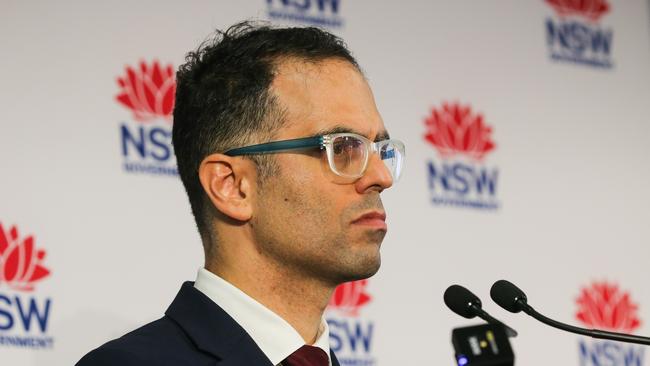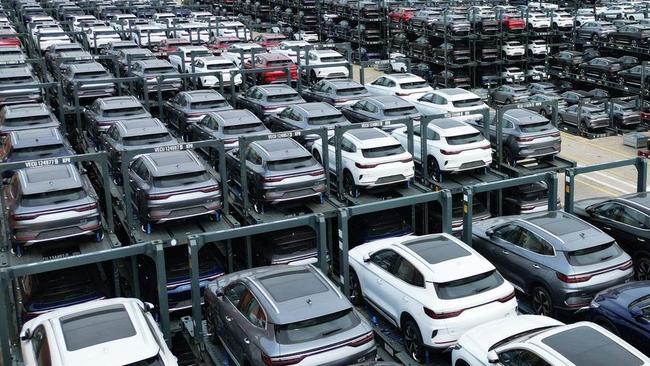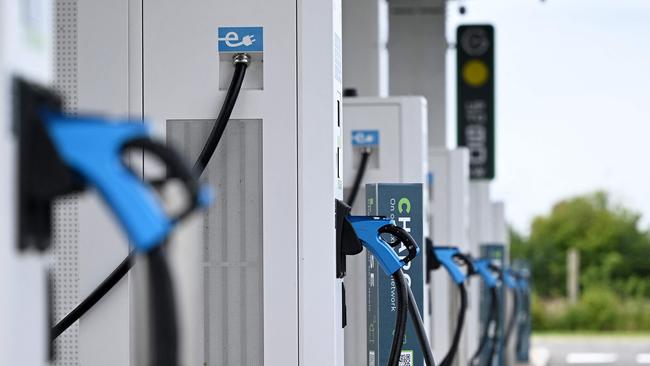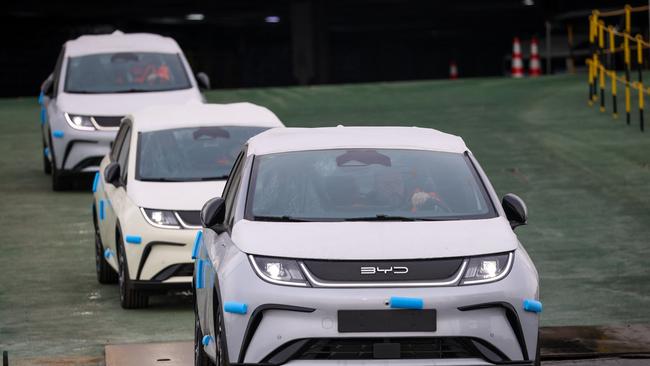NSW Government stands by target to have electric vehicles make up 30 per cent of car sales by 2027
The NSW Government is standing by an ambitious target of having electric vehicles make up almost one-third of all new car purchases in just two years’ time, despite a downturn in sales.

NSW
Don't miss out on the headlines from NSW. Followed categories will be added to My News.
The NSW Government is standing by an ambitious target of having electric vehicles make up almost a third of all new car purchases in just two years’ time, despite a downturn in sales and motoring industry scepticism.
NSW Treasurer Daniel Mookhey says there is “no compelling reason to deviate” from the state’s target of having electric vehicles make up 30 per cent of all new light vehicles by 2027 despite figures revealing they accounted for just 6.5 per cent in the 12 months to October 2024.
The figure, which Mr Mookhey provided to NSW Parliament, represents a decline from the 7 per cent figure in the previous 12-month period.
Mr Mookhey said measures in place to help the state reach the 30 per cent target by 2027 included a NSW Government electric vehicle strategy.
He said the landscape aws “continuing to evolve at a rapid pace”, with factors such as the commencement of new Commonwealth emissions standards this year expected to incentivise electric vehicle sales.

Mr Mookhey updated parliament as made as part of mandatory reporting former treasurer Matt Kean introduced prior to the last election.
Some motoring groups have cast doubt on whether the 30 per cent target can be reached, with Motor Trade Association chief executive Matt Hobbs describing it as a “tall order”.

“It’s an ambition, but there are still barriers,” he said.
“Some of the biggest selling cars in Australia, like utes and SUVs, still don’t have viable electric alternatives.
“They’re coming onto the market, but it’s still some time away before we see a transition in a big way.”
Mr Hobbs said barriers for drivers making the switch to electric vehicles also included access to charging infrastructure, particularly in regional areas.

The drying up of government rebates for electric vehicles, including a $3000 incentive that ended last year, had also had an impact, he said.
“Cost is becoming less and less of a barrier, but people still want to know is an EV big enough for their needs and many people are wary of the availability of charging infrastructure for longer drives,” he said.
In a statement, a NSW Government spokeswoman said the uptake of new battery electric vehicles in NSW was “broadly consistent with national and international trends”.
“In the year to 31 October 2024, all new light vehicle registrations were down by four per cent, with cost-of-living pressures likely a major factor,” she said.

“The NSW Government continues to aim for a target of EV registrations hitting 30 per cent by mid-2027.
“The NSW Government is leading the country with significant investments in EV charging infrastructure.”
The electric vehicle purchases reported to parliament do not include hybrids, which experienced an increase in sales last year.
Electric Vehicle Council spokesman Aman Gaur believes the NSW government “can do more” to help reach its targets, including reintroducing incentives.
“While NSW has made progress, reaching targets will require a stronger commitment including reintroducing financial incentives, expanding charging infrastructure, and ultimately ensuring that EVs are more affordable and accessible,” he said.
There are currently 2505 public EV chargers installed in NSW - a number expected to increase in 2025 after local councils received state government funding to build more charging station in public areas.
Figures released by the Federal Chamber of Automotive Industries and Electric Vehicle Council this week showed the Tesla Model Y was the most popular electric vehicle model sold in 2024, followed by the Tesla Model 3 and MG 4.
More Coverage
Originally published as NSW Government stands by target to have electric vehicles make up 30 per cent of car sales by 2027





